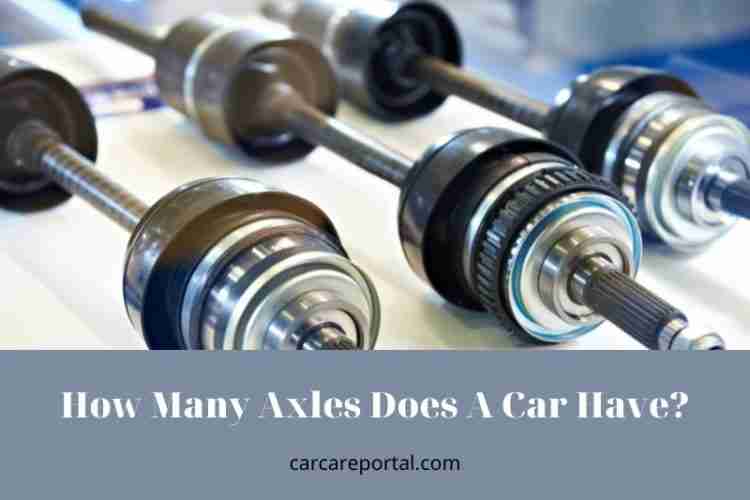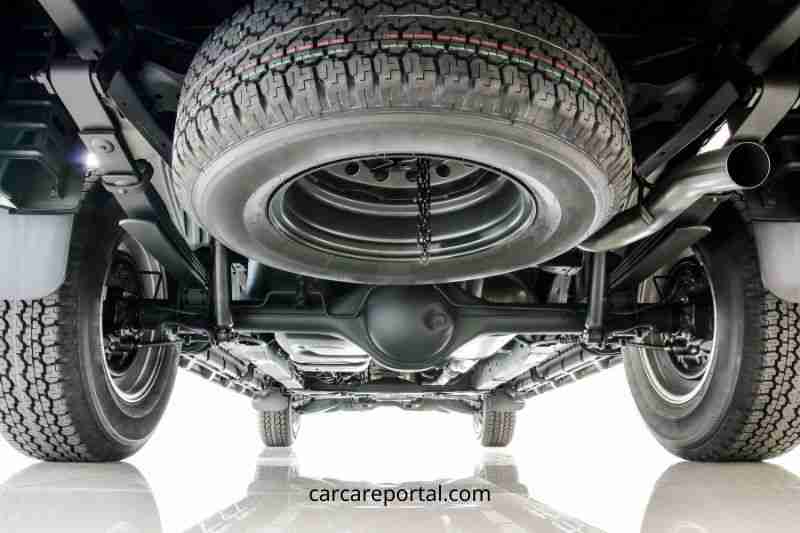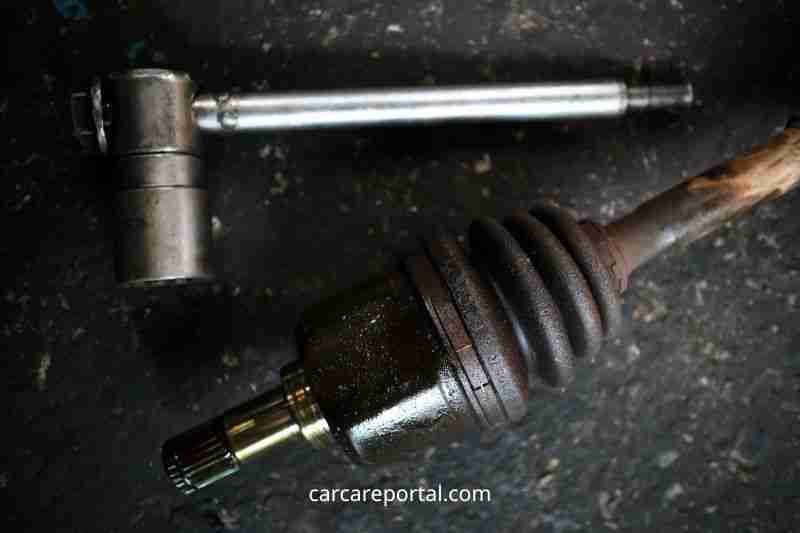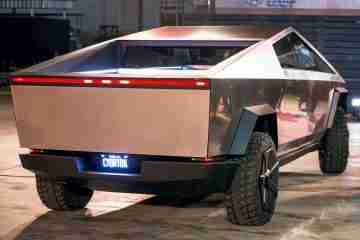How Many Axles Does A Car Have? Tips New 2022

Have you ever wondered how many axles does a car have? Most cars have either two or four axles. The front axle is responsible for steering the car, while the rear axle provides extra power to help the car accelerate.
What Is an Axle and What Do They Do?
A central steel shaft that assists in the spinning of a vehicle’s wheels is known as an axle.
When the wheels spin smoothly, the axle is working correctly.
Although the number varies depending on the vehicle, no vehicle can function without axles.
Some bearings support the axle and are located in the center of the wheels.
A correctly aligned vehicle can withstand the vehicle’s massive weight when stopping or accelerating.
The axle’s function extends beyond just connecting wheels. The axle is one of the most critical components of an automobile since it regulates the power that propels the vehicle.
It may turn when the automobile wheel spins since it is bonded to the wheels.
You’ve probably pondered how many axles a vehicle has at some time. Continue reading to learn more about axles and how many there are in a vehicle.

Types of Axles
The type of vehicle will determine the kind of axle utilized. Other elements that influence a vehicle’s axles include:
- The force generated
- Vehicle technical specifications
- The gear mechanics of the vehicle
Depending on the requirements, a vehicle may come with pre-designed axles or modified axles.
A vehicle should have customized axles installed to have greater control over the wheels.
They do this by fine-tuning the speed and torque of the wheels.
According to automobile experts, as long as custom axles are adequately maintained, they will regulate the torque and speed of the vehicle very well.
Let’s have a look at the many sorts of axles in a car:
1. Axle in the front
It is located in the vehicle’s front and controls the front wheels.
Its job is to aid with steering and absorb any stress from difficult roads.
It also bears the weight of the vehicle at the front.
It comprises four major components: the beam, the track rod, the swivel pin, and the stub axle.
Because of its usefulness, the front axle is built of nickel steel and carbon steel to provide maximum strength.
Front axles are classified into two types:
- The moving front axle
- The stalled front axle
2. Axle in the back
It is located between the differential and controls the car’s back wheels.
Its job is to transfer power from the differential to the rear wheels during acceleration.
The rear axle is divided into two sections in terms of design.
The differential joins the two sections, which are half shafts.
This axle may be live, which means it spins simultaneously on the vehicle’s wheels.
There are three kinds of rear axles:
- The axle is semi-floating.
- The floating three-quarter axle
- The axle is fully floating.
3. Axle Stub
It uses kingpins to link the front wheels and axles.
It comprises alloy steels (molybdenum and chromium) and 3% nickel steel.
Stub axles are classified into four types:
- The Elliot’s
- The Lamoine’s
- The Lamoine Reversed
- Elliot’s Reverse

How Many Axles Does A Car Have?
Most automobiles have two axles. Cars and trucks, on average, have one axle for every pair of wheels. These are known as “2-axle” vehicles, most vehicles on the road. Motorcycles, like cars, have two axles.
Again, it’s essential to understand your axle and how it works so that you’re prepared if anything goes wrong with it.
Your axles are critical to the safe running of your car, so let’s get right into it.
Common Axle Issues
Knowing the signs of joint axle issues benefits any automobile owner. In this part, we’ll go through the list and explain how to detect and resolve the problems.
1. Clicking Sound
The typical axle issue is loud clicking or crunching from the left or right wheel while turning left or right. This is due to faulty CV joints.
The term refers to the ability of CV joints to continue sending power to the wheels even while turning and negotiating rough terrain. It is critical to repair damaged CV joints as soon as they show indications of wear since they pose a significant safety threat.
2. Vibrations
There are various reasons for vibrations in a vehicle, which we discussed in depth in the article Reasons Why Your Car Vibrates Between 30 & 40 mph & 60 mph. One of the suspicions is a deteriorating CV axle, so get your car evaluated if you notice excessive vibrations while driving.
3. Wheels with Grease
The lubricating grease is trapped by a rubber cover on the CV joint. The grease slowly leaks out when it cracks, lubricating the car’s rims and tires. The vehicle may be driven until there is no more grease available, but this brief duration is better spent on a trip to the repair and save yourself the time and money of hiring a tow service.
What Makes an Axle Break?
Even though an axle is meant to handle heavyweights, its longevity is limited.
The following are some of the possible causes of axle failure:
- Your vehicle constantly transports more weight than is necessary.
- If your car is older, the axle may be rusted and fragile.
- Driving through uneven terrain puts extra strain on the axle.
What Constitutes a 2-Axle Vehicle?
An automobile is referred to as a 2-axle vehicle that has two axles.
Each of these axles may hold one or two wheels.
- Vehicles with two axles include:
- Motorcycles
- Bicycles
- Tricycles
- Light trucks/common vehicles
- Class 8 vehicles
- Some medium-duty vehicles
As a result, a 3-axle vehicle has three axles. A 4-axle vehicle has four axles, and so on.
The more axles there are, the better the vehicle can sustain its weight and the weight of any cargo.

Is a car equipped with 2 or 4 axles?
The answer is That it depends since different types require various axles for vehicles, and the number of axles required also varies. A vehicle’s axle type is determined by several criteria, including technological requirements and the amount of force generated.
Some cars already have pre-designed axles with conventional formats. Still, customized axles work best since they can better match the demands and specifications of the automobile, such as being able to modify the wheels’ speed and torque to a greater extent.
Depending on the vehicle’s demands, numerous suspension systems (mechanical connections, springs, and dampers that link the wheels to the chassis) and axles are used.
The axle’s job in cars with live-axle suspension is to convey driving torque to the wheel while also maintaining the position of the wheels relative to each other and the vehicle body. Axles in this sort of suspension system must support the vehicle’s weight and load.
A non-driving axle, on the other hand, lacks a shaft and acts solely as a suspension and steering component, such as the front beam axle seen in heavy-duty vehicles, vans, and two-wheel drive light trucks.
Other suspension systems use axles to convey driving torque to the wheels merely. The suspension system has no control over the position and angle of the wheel hubs.
This is typical of the independent suspensions featured on most current vehicles and SUVs and on the front of many light trucks. These systems will still have differentials, but no axle housing tubes will be connected. They might be located in a transaxle or mounted to the vehicle frame or body.
The driving torque is transmitted to the wheels through axle shafts, typically constant-velocity. The drive shafts for a front-wheel drive independent suspension system, like complete floating axle systems, do not support any vehicle weight.
On a motorized vehicle, the axle distributes engine power and torque from the gearbox to the wheels. In today’s front-wheel drive automobiles, the gearbox and front axle are often combined into what is known as a transaxle. The engine of a rear-wheel drive vehicle links to a driveshaft, which spins the drive axle at the rear of the vehicle.
Most contemporary automobiles now feature a split axle with universal joints connecting two half axles. The CV joint, which links each to a wheel, has independent suspension, rotates while turning, and turns at various rates. As a consequence, tire traction improves, and tire life is extended.
So, how many axles does an automobile have again? When driving on a toll road, you will observe that cars are classed depending on how many axles they have, and you may begin to wonder why vehicles are classified in this manner.
After studying the fundamentals of axles, determining the number of axles based on the vehicle type may be easy. Most automobiles or typical cars have four axles or two sets of axles, aiding wheel rotation. Looking at a vehicle from the side and counting the number of wheels is easy to determine how many axles it has.
Most automobiles have four or two tires, one in front and one in back. Furthermore, two sets of tires equal two axles. However, depending on the vehicle’s suspension system and other requirements, the number of axles may vary.
The vehicle type determines the number of axles in a car. Most automobiles have two axles that rotate the wheels. Larger vehicles with more passengers and heavier cargo have more wheels and axles.

How to Select the Appropriate Axle Ratio for Your Pickup Truck
Many vehicles have specific axle ratios and impressive torque, engine, and gearbox requirements. According to Edmunds, an axle ratio of 3.55:1 indicates that the driving shaft revolves 3.55 times for every wheel rotation.
In most circumstances, a conventional axle ratio is enough for drivers who do not anticipate hauling huge weights. However, the maximum axle ratio is recommended if you want to pull big trailers or move significant loads.
FAQs
1. What will happen if my axle fails?
Axle failure may result in loss of control and power loss to the associated wheel. This is one of the most severe failures that may occur only as a result of significant vehicle neglect or in the event of a collision.
2. What is the cost of replacing an axle?
The price of an axle depends on its kind and the brand, model, and year of your vehicle. The general price is between $500 and $1000, plus $100 to $200 for labor.
3. Is 4WD more secure than 2WD?
Because 4WD distributes power to all four wheels, it is more difficult to lose control of the vehicle at high speeds. Front-wheel drive cars oversteer, whereas rear-wheel drive cars understeer. Four-wheel drive vehicles probably slide the best of the three. However, it would help if you never put yourself in that position.
4. What exactly is a 4-by-2 car?
This word refers to trucks and SUVs rather than automobiles. The first number refers to the number of wheels on a vehicle, and the second to the number of driving wheels. This is also applicable to 44 or 42 labels.
Conclusion
Knowing what each axle accomplishes for your car is more important than knowing how many axles you have in your vehicle. They, like other critical automobile components, are worth studying about since if they fail on you, you will no longer be able to drive your car.
Even though axles are designed to withstand colossal weight, they may deteriorate over time due to various dangerous scenarios. They know which will allow you to decide better which components need to be fixed or replaced.
Read also:













No Comment